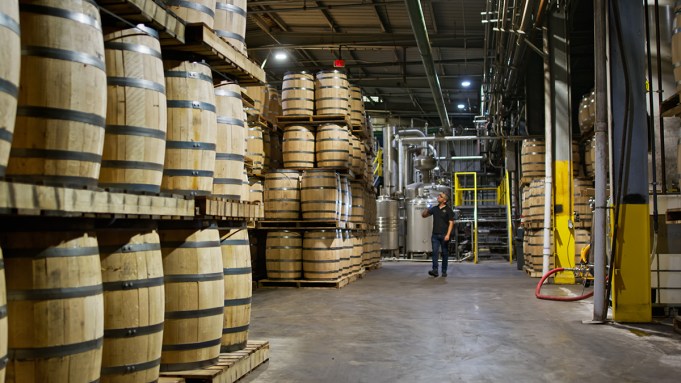It looks like Trump’s tariffs were the straw that broke Irish whiskey’s back.
Several independent distilleries in Ireland have closed or limited production in recent months, with the trade war devastating an industry already grappling with waning U.S. demand, rising production costs, and ongoing supply chain issues.
The Killarney Brewing & Distilling Co. closed down last month, resulting in the loss of about 50 jobs, according to Bloomberg. The company, which started as a tap room in Kerry a decade ago before debuting its blended whiskey last year, was battling those industry-wide problems, but says “tariffs on Irish whiskey exports to the U.S. and wider economic uncertainty” were the final nail in the coffin.
Eoin O Cathain, director of the Irish Whiskey Association (IWA), which represents 47 distillers, or 98 percent of the industry, says Irish whiskey makers have been struggling over the past couple of years. “But then this year, in particular for our SMEs (Small and Medium-Sized Enterprises), when the talk of tariffs first started, that raised a lot of concerns,” O Cathain told Bloomberg. “It made it more difficult to keep the head above water.”
It’s not just the smaller distilleries being affected, either. Industry heavyweights such as Diageo and Pernod Ricard have also been impacted: Diageo put an “extended pause” on distillation at the Roe & Co Distillery in Dublin in June, while Pernod Ricard, the maker of Jameson, halted production in Midleton in April but has since resumed, Bloomberg notes.
The influx of closures is particularly hard to swallow, given that the industry was booming not too long ago. Between 2010 and 2024, the number of distilleries in Ireland grew from four to over 50, according to the Irish Whiskey Association (IWA). Demand for Irish whiskey skyrocketed, as there was a renewed interest in spirits across the board. By 2022, exports of Irish whiskey to the U.S. had doubled the previous decade’s levels, reaching some 48,000 tonnes.
“It was a phenomenal boom,” Marie Byrne, who founded the Dublin Whiskey Company, told Bloomberg. “People had forgotten that this is a very cyclical industry.”
Demand stayed strong even throughout the pandemic as more people began drinking at home. By the end of 2023, demand in the U.S. had started to wane, though. Exports to the U.S. by volume in 2024 were down a third from 2022 levels.
“All spirits had the same problem in the U.S., wholesalers overordered as they assumed the volume growth post-pandemic would remain in place,” Bloomberg Intelligence analyst Duncan Fox explains. “But when interest rates went up, the holding costs of that booze became very costly, just at the same time as free government money ran out. Orders fell because wholesalers couldn’t afford new stock.”
It has also become more expensive to make whiskey in Ireland, with electricity prices alone nearly double what they were four years ago. To make matters worse, Ireland, which is part of the E.U., has been slapped with a 15 percent tariff on most exports to the U.S., whereas its whisky-purveying neighbor, Scotland, only faces a 10 percent tariff because it is part of the U.K.
Fox estimates the trade war will cause whiskey prices to rise by as much as 6 percent, but distilleries may try cutting costs to offset tariffs and avoid further damaging demand in the U.S. “When it comes to Irish whiskey, the U.S. is pretty much the only lens, bar Ireland,” said Fox.
Authors
